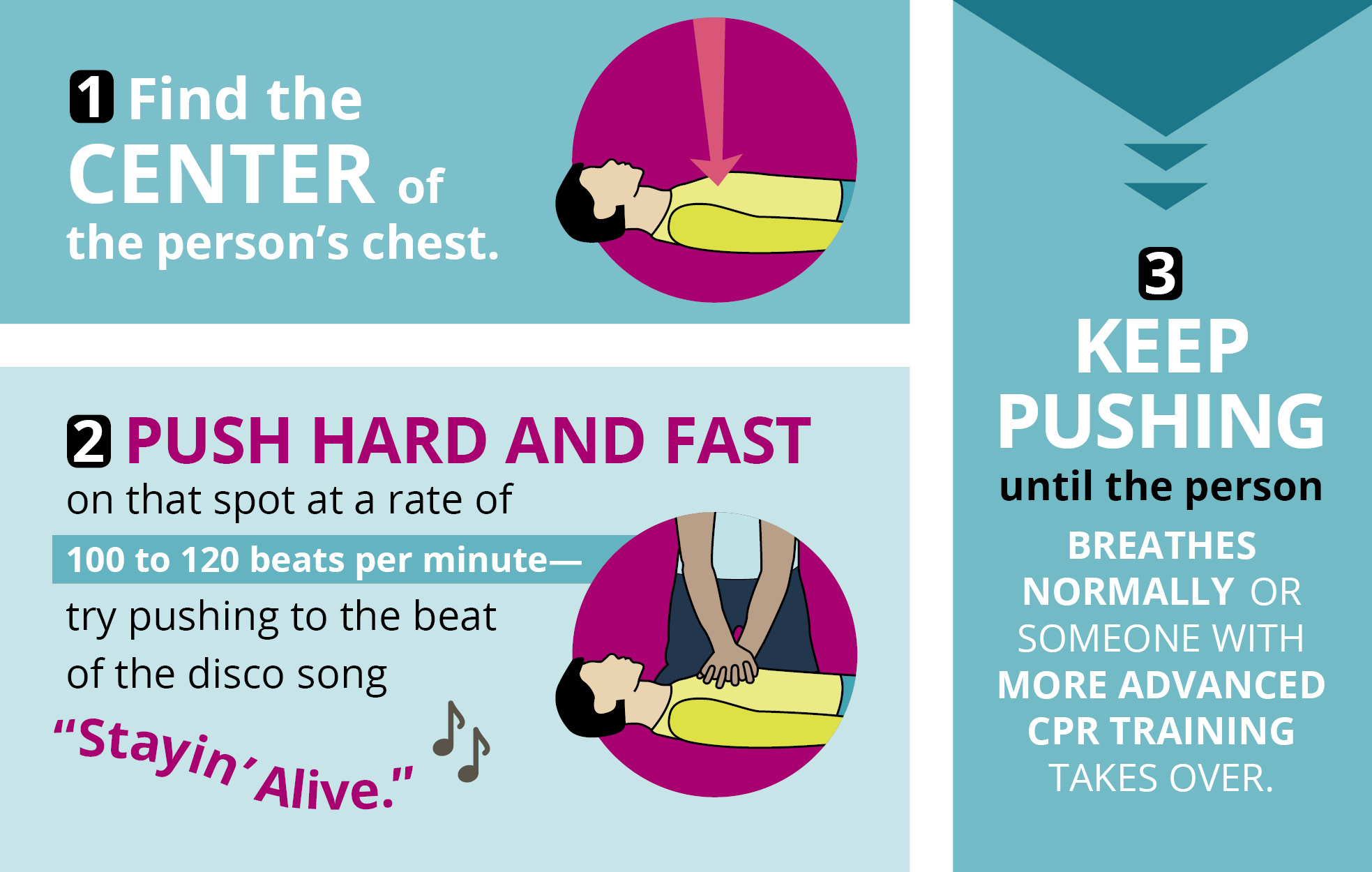Cardiac arrest can be reversible if treatment (including hands-only cardiopulmonary resuscitation—or CPR) is started immediately. If you spot the signs of sudden cardiac arrest, call 911. While you wait for help, do this.

How to do hands-only CPR
Cardiac arrest can be reversible if treatment (including hands-only cardiopulmonary resuscitation—or CPR) is started immediately. If you spot the signs of sudden cardiac arrest, call 911. While you wait for help, do this.
- Find the center of the person’s chest.
- Push hard and fast on that spot at a rate of 100 to 120 beats per minute—try pushing to the beat of the disco song "Stayin' Alive."
- Keep pushing until the person breathes normally or someone with more advanced CPR training takes over.
Reviewed 7/22/2025
Sources
- American Heart Association. "CPR Guide." https://cpr.heart.org/-/media/CPR-Files/Courses-and-Kits/Hands-Only-CPR/2021HOCPR-documents/DS17758_CPRWeek_HOCPRvsCPR_02kk.pdf.
- American Heart Association. "CPR is Key to Survival of Sudden Cardiac Arrest." https://www.heart.org/en/news/2018/07/12/cpr-is-key-to-survival-of-sudden-cardiac-arrest.
- American Heart Association. "Hands-only CPR Fact Sheet." https://cpr.heart.org/en/-/media/CPR-Files/Courses-and-Kits/Hands-Only-CPR/2024-HOCPR-Resources/DS19398_ECC_CPRWeek_Fact_Flyer_2024_PDF.pdf?sc_lang=en.
- American Heart Association. "Heart Attack and Sudden Cardiac Arrest Differences." https://www.heart.org/en/health-topics/heart-attack/about-heart-attacks/heart-attack-or-sudden-cardiac-arrest-how-are-they-different.